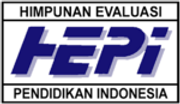The use of Edmodo by supervisor to improve professional competence of Islamic Education teachers
Abstract
This study aims to find out the implementation of Edmodo platform in clinical supervision to improve professional competence of The Islamic Education teacher of Elementary School (SD) in Salatiga in 2017. This research used the action research method. Data retrieval techniques were through observation and interview with descriptive analysis. The results of this study concluded that; First, the average result of observation cycle 1 in stage 1 is 62.32 and in stage 2 is 66.80 with progress increase 4.48 with category A is 1 person, category B is 8 people, category C is 2 people. Secondly, the average result of observation of cycle 2 in stage 1 is 76.52 and 84.40 in stage 2, with progress increase 7.88 with category A is 10 people and category B is 1 person. Third, the implementation of the Edmodo platform in clinical supervision can be used to improve the professional competence of The Islamic Education teacher of elementary school by considering the average score level of 65.19 which means that the score is capable of performing clinical supervision to improve the professional competence of The Islamic Education teacher of elementary school.
Keywords
Full Text:
PDFReferences
Al-Said, K. M. (2015). Students’ Perceptions of Edmodo and Mobile Learning and their Real Barriers towards Them”, TOJET: The Turkish Online Journal of Educational Technology, 14 (2). 167-168.
Assa, E. R. (2015). Strategy of Learning Hal-Hal yang Boleh dan Tidak Boleh dilakukan oleh Guru saat Mengajar. Yogyakarta: Araska.
Cahyono, Y. D. (2015). E-Learning (Edmodo) Sebagai Media Pembelajaran Sejarah. Jurnal Penelitian. 8 (5). 102-112.
Fakhrudin. Akhmad, S. & Haryono. (2014). Pengembangan Model Supervisi Klinis dengan Pendekatan Lesson Study untuk Meningkatkan Kompetensi Profesional Guru Bahasa Inggris SMA Negeri Di Kabupaten Cilacap. Journal of Educational Research and Evaluation, 3 (6), 8-17.
Gunawan, A. H. (2011). Administrasi Sekolah Administrasi Pendidikan Mikro, Jakarta: Rineka Cipta.
Iriyani, D. (2008). Pengembangan Supervisi Klinis Untuk Meningkatkan Keterampilan Dasar Mengajar Guru, Jurnal Didaktika, 2 (2). 278-285.
Jati, R. P. (2016). Developing Teachers’ Guide to Use Facebook Group in a Blended Writing Course. Register Journal, 9 (2): 71-100.
Knoff, H. M. (1988). Clinical Supervision, Consultation, and Counselling: A Comparative Analysis for Supervisors and other Educational Leader’s. Journal of Curriculum and Supervision Spring. 3 (3). 240-252.
Marzal, J. (2014). Studi Penggunaan Jejaring Sosial Edmodo Sebagai Media E-Learning Oleh Dosen Senior Yang Tidak Terbiasa Bekerja Dengan Komputer. Edumatica. 4 (4). 37-43.
Maunah, B. (2009). Supervisi Pendidikan Islam Teori dan Praktik. Yogyakarta: Teras.
Miarso, Y. (2005). Menyemai Benih Teknologi Pendidikan diterbitkan atas Kerjasama dengan Pusat Teknologi Komunikasi dan Informasi Pendidikan Pustekkom DIKNAS, Jakarta: Kencana.
Michel, R. Rousmaniere, T. Edina. (2016). Using Technology to Enhance Clinical Supervision. Alexandria: American Counseling Association.
Mulyasa, H.E. (2013). Uji Kompetensi dan Penilaian Kinerja Guru, Bandung: PT Remaja Rosdakarya.
Nu'man, A. Z. (2014) Efektifitas Penerapan e-learning Model Edmodo dalam Pembelajaran Pendidikan Agama Islam terhadap Hasil Belajar Siswa Studi Kasus pada SMK Muhammadiyah 1 Sukoharjo. Duta, 7(9), 1-13.
Peraturan Pemerintah Republik Indonesia Nomor 74 Tahun 2008 tentang Guru Bab IV Beban Kerja pasal 54 ayat 8, 36.
Priansa, D. J. (2014). Kinerja dan Profesionalisme Guru, Bandung: Alfabeta.
Purwanto, M. N. (2014). Administrasi dan Supervisi Pendidikan, Bandung: PT Remaja Rosdakarya.
Reavis, C. A. (1976). Clinical Supervision A Timely Approach. Education Leadership Journal. 1 (5). 360-363.
Rugaiyah. (2016). Pengembangan Model Supervisi Klinis Berbasis Informasi dan Teknologi, Cakrawala Pendidikan. 35 (3). 421-431.
Sukardi. (2015). Metodologi Penelitian Pendidikan Kompetensi dan Praktiknya. Yogyakarta: Bumi Aksara.
Thongmak, M. (2013). Social Network System in Classroom: Antecedents of Edmodo Adoption, Journal of e-Learning and Higher Education. 2013 (2). 1-15.
U.S. Department of Education National Institute of Education Educational Resources Information Center. (1984). “The Best of ERIC on Educational Management Clinical Supervision”, The Educational Resources Information Centre (Eric), 2 (72). 2-5.
Uzun, E. (2015) Students’ Attitude Towards Edmodo as a Supplementary Tool for Higher Education. Participatory Educational Research, 2 (11). 78-83.
Widarta, M. (1992). Pemikiran tentang Supervisi Pendidikan, Jakarta: Bumi Aksara.
Xavier, K., Shepherd, L., & Goldstein, D. (2007). Clinical supervision and education via videoconference: a feasibility project. Journal of Telemedicine and Telecare, 13(4), 206-209.
DOI: https://doi.org/10.18326/mdr.v10i1.99-126
Refbacks
- There are currently no refbacks.
Copyright (c) 2018 Abidin Sholeh

This work is licensed under a Creative Commons Attribution 4.0 International License.

This work is licensed under a Creative Commons Attribution 4.0 International License.
Program Studi Pendidikan Guru Madrasah Ibtidaiyah (PGMI)
Universitas Islam Negeri (UIN) Salatiga, Indonesia
Jl. Lingkar Salatiga Km. 2 Pulutan, Sidorejo, Kota Salatiga, Jawa Tengah 50716,
Telp. (0298) 323706 – Fax. (0298) 323433
Technical Support: jurnalmudarrisa@iainsalatiga.ac.id
P-ISSN: 2085-2061
E-ISSN: 2541-3457



